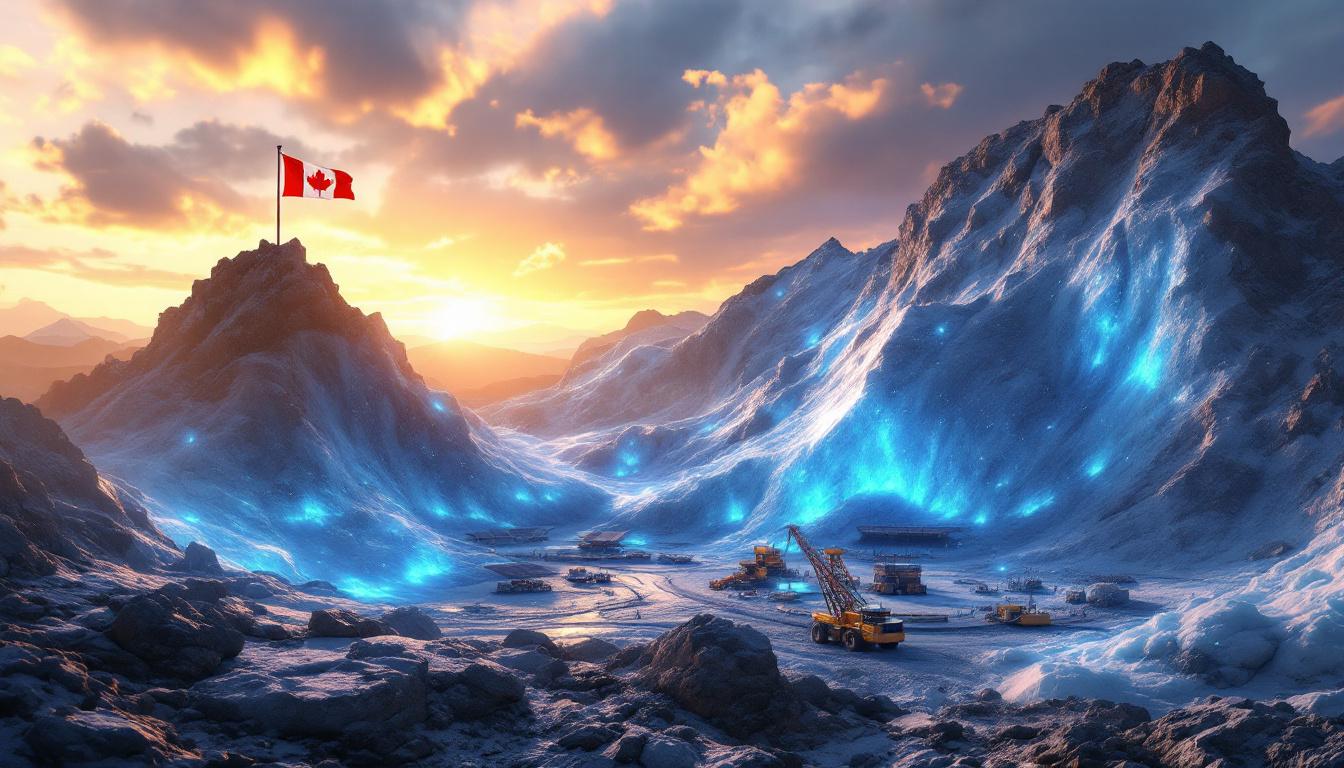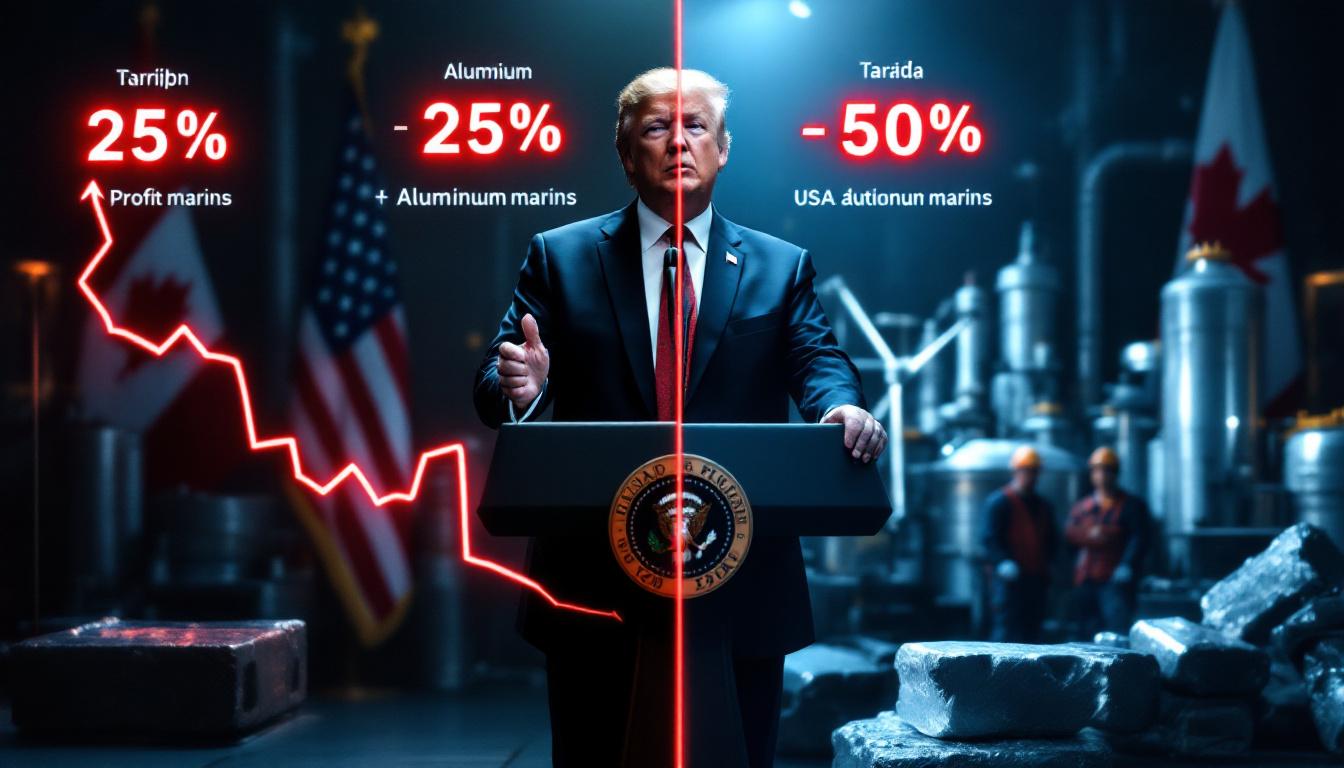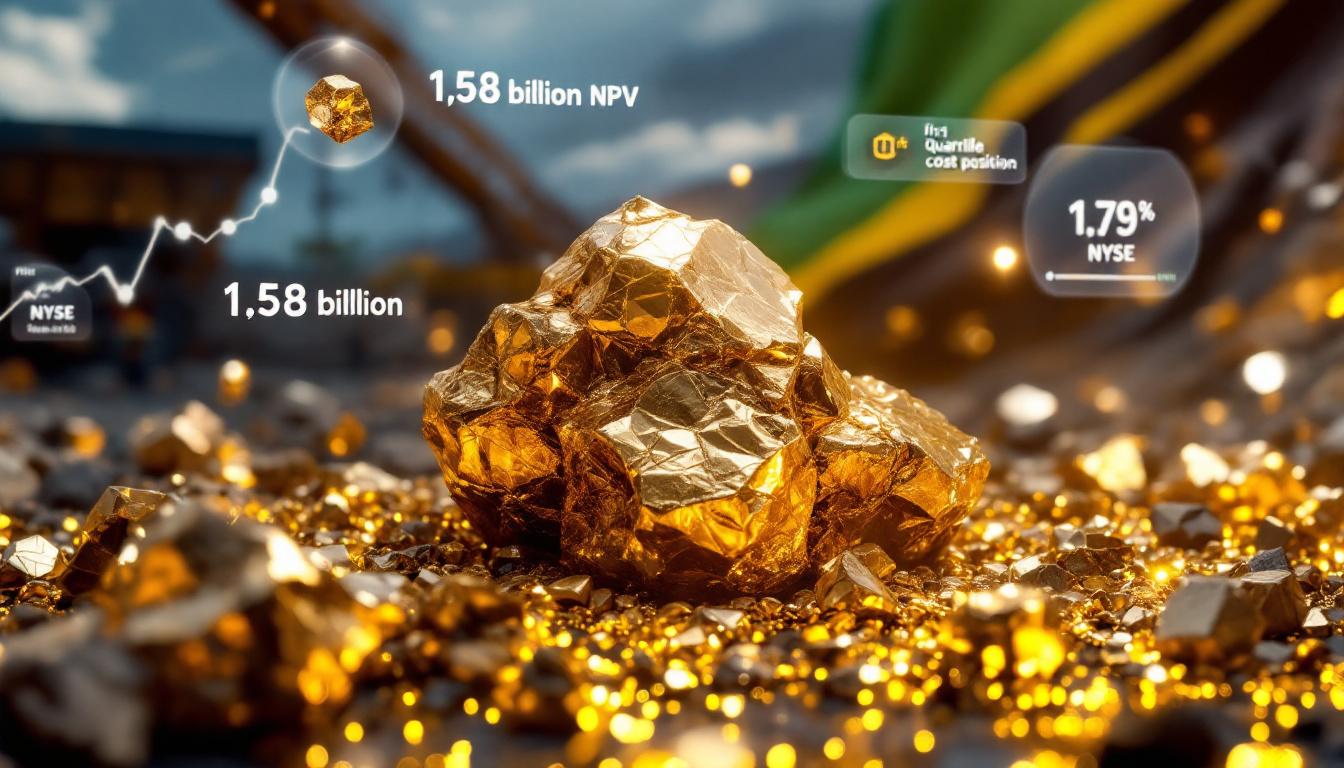What Are China's Rare Earth Export Controls?
China implemented export controls on seven rare earth elements and related magnets in April 2025, establishing a complex licensing system. These restrictions were introduced as a retaliatory measure against US tariffs, creating significant disruptions in global supply chains. The controlled materials are critical components in various high-tech applications, particularly in automotive manufacturing and defense industries.
According to industry analysis, these restrictions represent the most significant disruption to the rare earth breakthrough since China's temporary embargo against Japan in 2010. Unlike previous measures, the current licensing system provides China with surgical precision in determining which companies and countries receive materials.
Recent Export Restrictions and Their Purpose
The April 2025 controls specifically target neodymium, dysprosium, terbium, and four other rare earth elements crucial for manufacturing high-performance permanent magnets. These magnets are essential for electric vehicle motors, wind turbines, and precision-guided weapons systems.
The licensing system allows China to maintain a veneer of open trade while exercising strict control over international material flows. License applications undergo rigorous review by Chinese authorities, with approval rates showing clear geopolitical patterns.
"The licensing system isn't a complete shutdown – it's a sophisticated valve that China can tighten or loosen based on their strategic interests," explains Dr. Melissa Chang, resource economist at Stanford University.
The Strategic Importance of Rare Earth Elements
Rare earth elements play a crucial role in modern technology, serving as essential components in electric vehicles, wind turbines, smartphones, and military equipment. China's dominant position in the global rare earth market—controlling approximately 75% of production and 85% of processing capacity—gives it significant leverage in international trade disputes.
These elements are irreplaceable in many applications due to their unique magnetic, luminescent, and electrochemical properties:
- Neodymium and praseodymium: Create the world's strongest permanent magnets
- Dysprosium and terbium: Allow magnets to perform at high temperatures
- Europium and yttrium: Enable red color in LED displays and phosphors
- Lanthanum: Critical for oil refining catalysts and electric vehicle batteries
The strategic importance of these elements has grown exponentially with the accelerating transition to green energy technologies and advanced defense systems.
How Has the Export Licensing System Affected Global Industries?
The restrictions caused rare earth magnet exports from China to plummet by approximately 75%, creating significant disruptions in automotive supply chains. Several production lines in Asia, Europe, and the United States experienced temporary shutdowns. According to industry representatives, the automotive sector initially entered "full panic" mode when the restrictions were first implemented, though the situation has gradually stabilized.
The impact has been asymmetrical across regions and industries, with clear evidence that Chinese authorities are prioritizing certain applications and end-users while delaying others.
Impact on Automotive Manufacturing
European automotive suppliers report that production disruptions peaked in May 2025, with at least 17 assembly lines across the continent experiencing temporary shutdowns. The impact has been particularly severe for electric vehicle production, where rare earth magnets are essential components in motors and drivetrains.
"The industry was in full panic two weeks ago," admitted a senior executive at a major European automotive supplier who requested anonymity. The situation has since improved, but hundreds of license applications remain pending, creating ongoing uncertainty for production planning.
Japanese and Korean automakers have reported similar challenges, though their longer-standing supply relationships with Chinese producers appear to have provided some buffer against the worst disruptions.
Current Status of Export Approvals
The approval rate for export licenses has accelerated from 25% to approximately 60%, according to Nils Poel, head of market affairs at European supplier association CLEPA. However, applications involving US end-users or products moving through third countries like India face longer processing times or lower prioritization.
This selective approach to license approvals suggests China is implementing a strategic rather than blanket restriction policy, with clear geopolitical considerations:
- European manufacturers: Receiving the "bare minimum" approvals to avoid complete shutdowns
- Japanese and Korean firms: Experiencing moderate delays but generally receiving approvals
- US-bound materials: Facing the longest delays and highest rejection rates
- Materials transiting through third countries: Subject to enhanced scrutiny
Kash Mishra, CEO of US magnet manufacturer Dexter Magnetic Technologies, reports spending "45 days trying to get paperwork right" for applications, with only 5 out of 180 license requests approved since April. Notably, those few approvals were specifically for non-defense applications.
Which Companies Have Been Most Affected?
The impact of China's rare earth export restrictions has varied widely across companies and sectors, with clear patterns emerging based on geography, industry, and end-use applications. Defense and aerospace companies have faced the most severe disruptions, while consumer electronics manufacturers have been relatively less affected.
European and American Manufacturers' Responses
Major automotive manufacturers have reported varying degrees of impact:
- Volkswagen stated its supply of rare earth components remains stable through existing inventory and alternative sourcing
- Stellantis indicated it has addressed immediate production concerns through supply chain adjustments
- BMW reported it had secured sufficient magnet supplies through the end of 2025 through forward contracts
- Ford acknowledged "significant challenges" in maintaining production schedules for electric vehicles
- General Motors has temporarily prioritized production of conventional vehicles over electric models
US magnet manufacturer Dexter Magnetic Technologies has received only 5 out of 180 license applications since April, with those approvals specifically targeting non-defense sectors. This pattern suggests deliberate targeting of US defense supply chains.
"It's an extended delay… we've spent 45 days trying to get paperwork right," explains Kash Mishra, CEO of Dexter Magnetic Technologies, highlighting the bureaucratic hurdles being placed before American companies.
Supply Chain Adaptations
Companies have implemented various strategies to mitigate disruptions, including:
- Seeking alternative suppliers outside China, particularly in Australia and Malaysia
- Prioritizing production of high-margin vehicles to maximize revenue during component shortages
- Building inventory buffers where possible, with some manufacturers reporting 3-6 month stockpiles
- Developing contingency plans for extended supply constraints, including temporary product redesigns
- Accelerating recycling programs to recover rare earth elements from end-of-life products
The healthcare sector has reported particular concerns around MRI machines, which require significant quantities of rare earth magnets. Several hospitals have delayed installation of new equipment due to supply uncertainties.
What Diplomatic Solutions Are Being Pursued?
International diplomatic efforts to address the rare earth crisis have intensified, with both public negotiations and private back-channel discussions seeking to normalize trade flows. The approaches have varied significantly between Western powers, reflecting different levels of dependency and strategic priorities.
US-China Agreement on Expedited Approvals
The White House announced on June 26, 2025, that it had reached an agreement with China to expedite rare earth export approvals. US Treasury Secretary Scott Bessent expressed confidence that "the magnets will flow," describing the deal as a "de-escalation" of tensions. However, neither party has provided specific details about changes to the existing export licensing system.
Industry observers remain skeptical about implementation, noting that:
- No formal changes to the licensing system have been announced
- Initial approval rates post-agreement show only modest improvements
- Chinese officials characterized the agreement as simply "continuing to process applications according to law"
- Applications involving military end-uses remain stalled
The agreement came after intensive negotiations in London between US and Chinese officials, following weeks of escalating tensions that threatened broader supply chain stability.
European Diplomatic Efforts
European officials report that China is approving the "bare minimum" of critical licenses for European firms to avoid production stoppages. This suggests a calculated approach by China to maintain pressure while preventing complete industrial breakdown in Europe.
The European Commission has pursued a distinct diplomatic strategy focused on:
"Our approach emphasizes mutual economic benefit rather than confrontation. We've made clear that supply chain stability serves all parties' interests," stated EU Trade Commissioner Elisa Ferreira.
- Emphasizing interdependence between European and Chinese manufacturing
- Offering concessions on separate trade issues to incentivize rare earth flow
- Developing a unified European position to prevent China from exploiting divisions
- Exploring potential WTO actions while preferring negotiated solutions
European diplomatic channels continue to work toward more predictable supply arrangements, with German and French officials taking leading roles in bilateral discussions with Beijing.
What Are the Long-Term Implications for Global Supply Chains?
The rare earth crisis has triggered fundamental reassessments of critical minerals energy transition across major economies. While short-term adaptations focus on surviving immediate disruptions, longer-term strategic shifts are already underway that will permanently alter global resource patterns.
Diversification of Rare Earth Sources
The export restrictions have accelerated efforts to develop rare earth mining and processing capabilities outside China. Countries including Australia, the United States, and Canada are investing in domestic rare earth production to reduce dependence on Chinese supplies.
Key projects gaining momentum include:
- MP Materials expansion of its Mountain Pass facility in California
- Lynas Rare Earths new processing plant in Kalgoorlie, Australia
- Rare Element Resources development of the Bear Lodge project in Wyoming
- Avalon Advanced Materials investment in Canadian separation capacity
These diversification efforts face challenges including environmental concerns, high capital costs, and technical expertise requirements. Industry analysts estimate it will take 3-5 years before alternative supply chains can significantly offset Chinese dominance.
Impact on Green Technology Transition
The restrictions potentially threaten the pace of global transition to green technologies:
- Electric vehicle production timelines may face delays, with manufacturers reassessing model release schedules
- Wind turbine manufacturing could experience component shortages, affecting renewable energy installation targets
- Energy storage systems requiring rare earth components may see cost increases
- Defense industries might prioritize securing alternative supply chains for mission-critical systems
Some environmental advocates have expressed concern that rare earth shortages could become an excuse for delaying climate action. However, others view the crisis as ultimately beneficial for spurring innovation in resource-efficient designs.
New Industrial Policies and Trade Patterns
The rare earth dispute has prompted countries to develop more robust industrial policies focused on critical mineral security. This includes:
- Government investments in domestic processing capabilities
- Formation of strategic partnerships between allied nations
- Development of recycling technologies to recover rare earths from end-of-life products
- Creation of strategic reserves to buffer against future disruptions
These shifts represent a fundamental reorganization of global resource flows that will likely persist regardless of how the current dispute is resolved.
What Can Companies Do to Mitigate Rare Earth Supply Risks?
Companies across affected industries are implementing both tactical and strategic approaches to navigate the current crisis and build long-term resilience. These measures balance immediate survival needs with preparation for a permanently altered supply landscape.
Short-Term Mitigation Strategies
- Maintain close communication with Chinese suppliers regarding license status and application strategies
- Develop inventory management strategies to buffer against supply disruptions, prioritizing critical components
- Prioritize production of high-value products that generate maximum revenue with limited materials
- Explore temporary substitution of materials where technically feasible, even at reduced performance
- Consider secondary market sources for components, while being vigilant about quality and provenance
- Collaborate with industry peers on non-competitive aspects of supply chain management
For companies with pending applications, working with experienced trade consultants familiar with Chinese export protocols has proven beneficial in increasing approval rates.
Long-Term Supply Chain Resilience
- Invest in research for rare earth alternatives or reduced usage through redesigned products
- Support development of domestic rare earth mining and processing through offtake agreements and investments
- Implement recycling programs to recover rare earth elements from manufacturing waste and end-of-life products
- Diversify supplier relationships across multiple countries to reduce geographic concentration risk
- Consider vertical integration strategies for the most critical components
- Participate in industry consortiums developing shared infrastructure for processing and refining
Organizations that view the current crisis as a catalyst for fundamental supply chain transformation rather than a temporary disruption to be weathered are best positioned for future stability.
FAQ: China's Rare Earth Export Restrictions
Are all rare earth elements subject to export controls?
No, China's rare earth export controls specifically target seven rare earth elements and related magnets, focusing on those most critical to high-tech manufacturing and defense applications. The restricted elements include neodymium, dysprosium, terbium, and several others used in permanent magnets and specialized applications. Other rare earths used primarily in catalysts and glass polishing remain largely unaffected.
How long are the export restrictions expected to last?
The duration remains uncertain. While diplomatic efforts have yielded some progress, the restrictions appear to be tied to broader US-China trade tensions and may fluctuate based on global market impact. Treasury Secretary Scott Bessent's characterization of recent agreements as a "de-escalation" suggests the possibility of improvement, but companies are preparing for extended disruption scenarios.
Can other countries replace China's rare earth production?
While several countries have rare earth deposits, developing the mining and especially the processing capabilities requires significant investment and time. Complete replacement of Chinese capacity would take years, though diversification efforts are accelerating. Australia, the United States, and Canada have viable deposits but face challenges in scaling processing capabilities that China has spent decades perfecting.
How are rare earth prices responding to the export restrictions?
Prices for affected rare earth elements and magnets have increased significantly, with some experiencing price jumps of 30-50% following the implementation of export controls. Neodymium oxide prices reached $178 per kilogram in June 2025, up from $105 in March. The price volatility has complicated procurement planning and contract negotiations throughout affected supply chains.
Global Rare Earth Supply Outlook
The current crisis has highlighted the extreme concentration in global rare earth supply chains and accelerated efforts to develop more diverse and resilient systems. While significant changes are underway, the transition will take years and require sustained investment and policy support.
Production Distribution and Future Projects
The global rare earth supply chain remains heavily concentrated, with China controlling approximately 75% of mining output and over 85% of processing capacity. This dominance reflects decades of strategic investment and less stringent environmental regulations.
Emerging projects aiming to diversify supply include:
| Project | Location | Target Elements | Projected Capacity | Timeline |
|---|---|---|---|---|
| Mountain Pass | California, USA | Nd, Pr, La, Ce | 45,000 tons REO | Expansion by 2026 |
| Mount Weld | Australia | Nd, Pr, Dy, Tb | 22,000 tons REO | Expansion by 2027 |
| Round Top | Texas, USA | Dy, Y, Hf, Li | 15,000 tons REO | Initial production 2028 |
| Strange Lake | Canada | Dy, Tb, Nd, Pr | 25,000 tons REO | Development phase |
These projects face significant challenges in establishing comprehensive supply chains that can match China's integrated capabilities. Particular bottlenecks exist in separation and processing technologies, where Chinese expertise remains unmatched.
Technological Innovations Reducing Dependence
Research into rare earth alternatives and recycling technologies is accelerating. Several manufacturers are exploring designs that reduce or eliminate rare earth content, while recycling initiatives aim to recover these valuable elements from end-of-life products.
Promising innovations include:
- Reduced-dysprosium magnets that maintain performance at high temperatures
- Iron-nitride permanent magnets with comparable strength to neodymium alternatives
- Switched reluctance motors that eliminate rare earth requirements for certain applications
- Advanced recycling processes capable of recovering over 90% of rare earths from scrap magnets
- Urban mining initiatives targeting electronics waste for rare earth recovery
These technological advances, combined with policy support and continued investment in alternative sources, suggest a gradual but fundamental reshaping of global rare earth supply chains over the coming decade. The recent executive order on critical minerals and development of an European CRM facility are part of this broader strategic shift toward supply chain security.
Further Exploration:
Readers interested in learning more about global rare earth supply chains and trade tensions can also explore related educational content available at Rare Earth Industry in China, which provides historical context and analysis of China's strategic approach to rare earth resources and production, as well as CSIS Analysis on Export Restrictions, which offers detailed examination of the geopolitical implications of China's rare earth policies.
Ready to Capitalise on the Next Major Mineral Discovery?
Don't miss critical trading opportunities from the rare earth market disruption. Visit the Discovery Alert discoveries page to understand how significant mineral discoveries can generate substantial returns and begin your 30-day free trial of real-time alerts powered by the proprietary Discovery IQ model.




